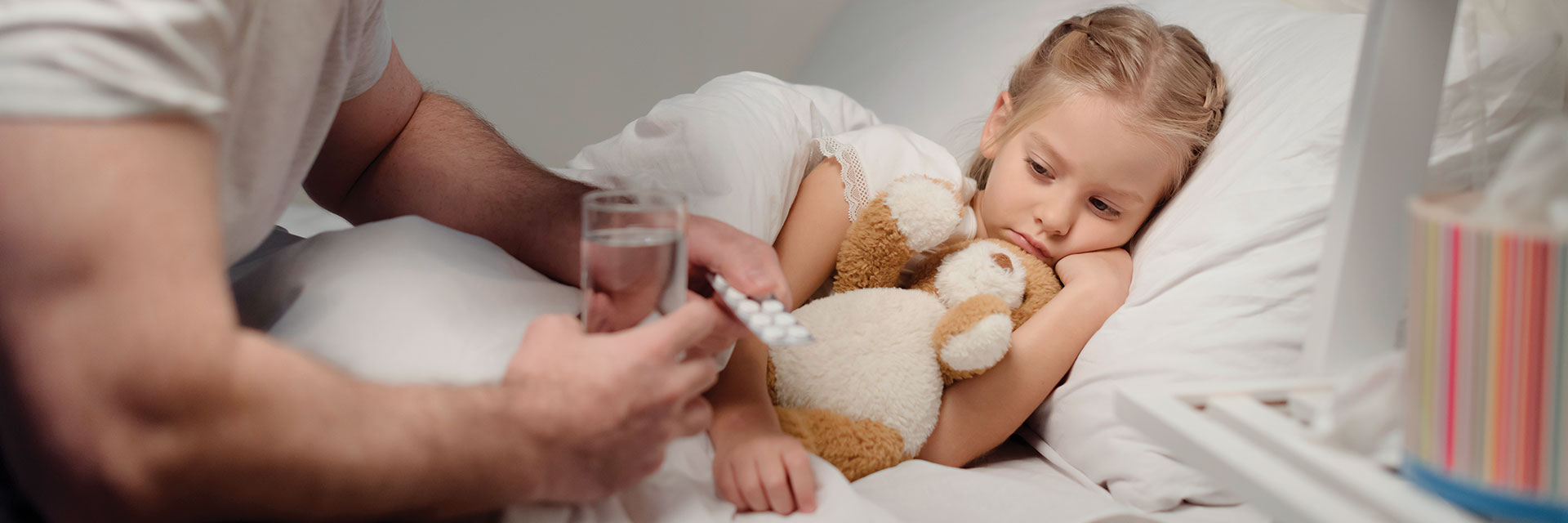The American Academy of Pediatrics (AAP) estimates that as many as one-third of unscheduled doctor visits and telephone calls by parents to their child’s pediatrician for advice are spurred by fever fears. What’s more, many parents administer a fever reducer to their child even though there is either minimal or no actual fever present.
“What causes so much angst is that parents are frequently concerned with the need to maintain a ‘normal’ temperature in their child who may be ill,” said Ashley Gair, M.D., pediatrician on the medical staff at Texas Health Plano. “We’re taught that the normal body temperature is 98.6° Fahrenheit, or 37° Celsius. But body temperature for adults and children fluctuates throughout the day, depending on such factors as age and activity level. For instance, the normal body temperature for babies is actually near 99.5°F. For this reason, doctors really don’t make a diagnosis of fever until the body temperature reaches 100.4°F (38°C) or above.”
Gair added that it’s also important for caregivers to understand that fever is not an illness but rather a physiologic mechanism that has infection-fighting benefits. Most fevers are of short duration, are benign and may actually protect the child from the occurrence of something more serious.
Leading research and health information resource Cleveland Clinic and the AAP offer these guidelines to parents on when to hold off on calling the pediatrician about a fever concern — and when to make the call.
When Not to Sweat a Fever
- Fever lasts less than 5 days and your child’s behavior is generally normal (A little extra fatigue is okay if the child is still playing, eating and drinking)
- Temperature of up to 101°F for a baby between 3 and 6 months old
- Temperature of up to 102.5°F for a child 6 months to 3 years old
- Temperature of up to 103°F if 3+ years old
- If your child recently got immunized, a low-grade fever can be normal if it lasts less than 24 hours
When to Call Your Pediatrician
- You have an infant younger than 3 months (A fever may be your baby’s only warning sign of a serious illness)
- Your child’s fever lasts more than 5 days
- Your child has a fever of 104°F or higher that doesn’t come down with medication within 2 hours
- Your child is not playing, eating, drinking or wetting/urinating as normal (3 diapers/day or going to the bathroom every 8-12 hours)
- Your child was recently immunized and has a temperature of 102°F+, or a fever for more than 24 hours
Acetaminophen vs. Ibuprofen. Which is Right for Your Child?
If your child comes down with a mild fever, there are over-the-counter (OTC) medications that may help reduce and relieve symptoms. Despite a host of different brand names and packaging, there are basically two major types of OTC fever reducers: acetaminophen, as found in Tylenol®; and NSAIDs, or non-steroidal anti-inflammatory drugs, such as Advil® that contain ibuprofen.
“The advantage acetaminophen has over ibuprofen is with the very young,”Gair said. “As a rule of thumb, acetaminophen may be used in children 3 months and older for a temperature above 102°F. An ibuprofen product may be given to a child who is 6 months or older. Aspirin is explicitly discouraged for anyone under the age of 18, due to its risk of causing Reye’s Syndrome.”
Gair offers parents these additional treatment tips for fever reduction:
- Plenty of rest
- Clear (but not red) liquids or popsicles to prevent dehydration
- Keep your child cool by skipping warm clothing and heavy blankets
- A lukewarm, not cold, bath to help bring a temperature down

